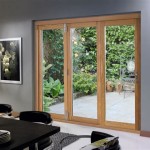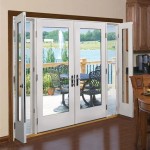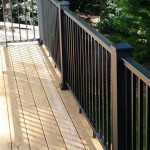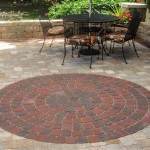How To Edge a Raised Patio: A Comprehensive Guide
A raised patio offers several advantages, including improved drainage, a more level surface in sloped yards, and a distinct aesthetic appeal. However, a crucial element of any well-constructed raised patio is a properly installed edging. Edging retains the patio material, defines its boundaries, and contributes to its overall structural integrity and visual appeal. This article provides a comprehensive guide on how to edge a raised patio, covering various materials, installation techniques, and essential considerations.
Before embarking on the edging process, meticulous planning is essential. This includes determining the patio's dimensions, selecting appropriate edging materials, and ensuring the planned design aligns with the surrounding landscape. Careful consideration of these factors will contribute to a successful and aesthetically pleasing outcome.
Key Point 1: Selecting the Right Edging Material
The choice of edging material significantly impacts the patio's aesthetics, durability, and overall cost. Several options are available, each with its own distinct advantages and disadvantages. The most common materials include:
1. Pavers: Using pavers that match or complement the patio surface provides a cohesive and integrated look. Pavers are durable, readily available in various colors and shapes, and can be set in mortar or a compacted gravel base. Mortared pavers offer the most robust and long-lasting edging solution, while gravel-set pavers offer some flexibility in areas prone to ground movement.
2. Landscape Blocks: These pre-cast concrete blocks are designed specifically for edging and retaining walls. They are relatively easy to install, offer a clean and uniform appearance, and come in various sizes and textures. Landscape blocks are often interlocking, providing added stability and preventing shifting. Ensure the selected blocks are suitable for the desired height of the raised patio.
3. Wood: Wood edging, typically made from pressure-treated lumber or decay-resistant species like cedar or redwood, offers a natural and rustic aesthetic. Wood is relatively inexpensive and easy to work with, but it requires periodic maintenance, such as staining or sealing, to prevent rot and decay. Wood edging is generally best suited for lower-level raised patios.
4. Metal Edging: Steel or aluminum edging provides a clean and contemporary look. Metal edging is durable, flexible, and can be easily bent to follow curves. It's often powder-coated for added protection against rust and corrosion. Installation typically involves staking the edging into the ground.
5. Natural Stone: Boulders or large stones offer a natural and rugged aesthetic. They are durable and require minimal maintenance, but they can be heavy and difficult to maneuver. Careful selection and placement of stones are essential to create a visually appealing and stable edging.
When selecting an edging material, consider the following factors: the overall design aesthetic, the height of the raised patio, the soil conditions, the anticipated weather conditions, and the budget.
Key Point 2: Preparing the Site and Installing the Edging
Proper site preparation is crucial for a successful edging installation. The process generally involves the following steps:
1. Marking the Perimeter: Use stakes and string to clearly mark the patio’s perimeter. Double-check the measurements to ensure accuracy and alignment.
2. Excavation: Excavate a trench along the marked perimeter. The depth of the trench will depend on the height of the edging material and the desired level of the patio surface. Ensure the trench is wide enough to accommodate the edging material and any necessary backfill.
3. Base Preparation: Compact the bottom of the trench using a hand tamper or plate compactor. Add a layer of gravel, typically 4-6 inches deep, and compact it thoroughly. This gravel base provides drainage and helps to prevent settling.
4. Setting the Edging: Once the base is prepared, begin setting the edging material. For pavers and landscape blocks, start at a corner and work outward. Use a level to ensure each piece is level both horizontally and vertically. If using mortared pavers, apply a layer of mortar to the base and the sides of each paver to create a strong bond. For interlocking blocks, follow the manufacturer's instructions for proper alignment and connection.
5. Backfilling: After the edging is installed, backfill the trench with soil or gravel. Compact the backfill in layers to prevent settling. Ensure the backfill is flush with the surrounding ground level.
6. Securing the Edging: Depending on the edging material, additional securing measures may be necessary. For wood edging, use stakes to secure the boards in place. For metal edging, drive stakes through the designated slots. For stone edging, ensure each stone is firmly bedded and stable.
The specific installation techniques will vary depending on the chosen edging material. Always consult the manufacturer's instructions for detailed guidance. Pay close attention to leveling, proper alignment, and secure anchoring to ensure a long-lasting and stable edging.
Key Point 3: Addressing Drainage and Stability
Proper drainage and stability are essential considerations when edging a raised patio. Without adequate drainage, water can accumulate behind the edging, leading to erosion, frost heave, and eventual failure of the edging material. Inadequate stability can result in shifting, leaning, or even collapse of the edging.
Drainage Considerations: To ensure proper drainage, incorporate the following strategies:
1. Gravel Base: As previously mentioned, a gravel base provides a permeable layer that allows water to drain away from the patio surface.
2. Weep Holes: For solid edging materials like mortared pavers or concrete blocks, consider incorporating weep holes at regular intervals. These small openings allow water to escape from behind the edging.
3. Backfill Material: Use a well-draining backfill material, such as gravel or crushed stone, to promote water flow away from the edging.
4. Slope: Slightly slope the patio surface away from the house to further facilitate drainage. A gentle slope of approximately 1/4 inch per foot is generally sufficient.
Stability Considerations: To ensure a stable edging, consider the following strategies:
1. Deep Footing: For taller raised patios, consider extending the edging below the frost line to prevent frost heave. This requires excavating a deeper trench and creating a concrete footing.
2. Mortar or Adhesive: Using mortar or construction adhesive to bond the edging material together adds significant strength and stability.
3. Interlocking Blocks: Interlocking blocks provide a mechanical connection that resists shifting and movement.
4. Geotextile Fabric: Installing geotextile fabric behind the edging helps to prevent soil erosion and maintains the integrity of the backfill.
By carefully addressing drainage and stability concerns, the longevity and structural integrity of the raised patio edging can be significantly enhanced. Neglecting these aspects can lead to costly repairs and potential safety hazards in the future. Therefore, it is prudent to thoroughly assess the soil conditions, anticipated weather patterns, and the height of the raised patio when planning the edging design.
In conclusion, edging a raised patio requires careful planning, material selection, and precise installation techniques. By following the steps outlined in this guide and paying close attention to drainage and stability, a durable, aesthetically pleasing, and structurally sound edging solution can be achieved, enhancing both the functionality and visual appeal of the outdoor living space.

Raised Patio Edging Ideas 10 Tricks To Edge A

How To Edge A Raised Patio 15 Gorgeous Ideas

Raised Patio Edging Ideas 10 Tricks To Edge A

How To Build A Raised Patio Guide By Fantastic

How To Build A Raised Patio With Retaining Wall Blocks

Garden Paving Ideas Creating A Raised Patio Checkatrade Blog

Raised Patio With Sleeper Edging

Patio Edging Ideas 10 Ways To Create Beautiful Borders Ideal Home

New Patio In Tollerton Sp Paving

15 Patio Edging Ideas For Stunning Borders Pavingsuper Co
Related Posts








